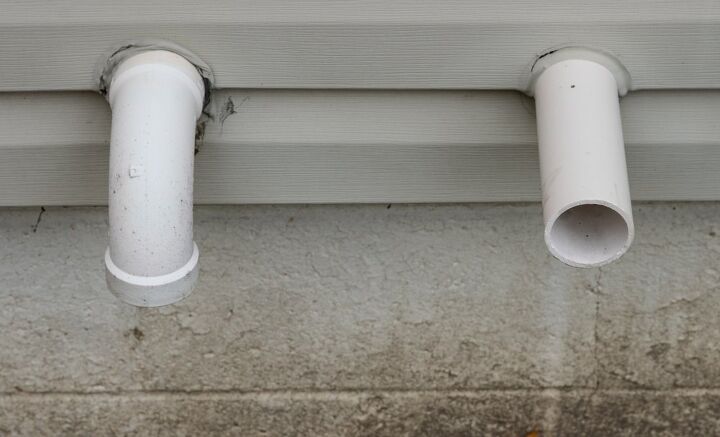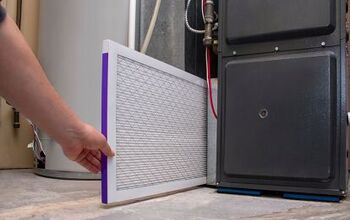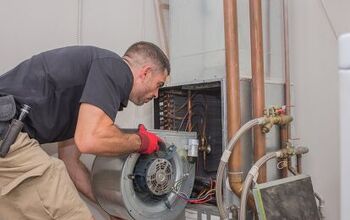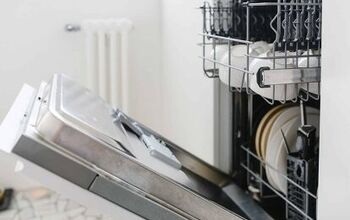Does A Furnace Need A Fresh Air Intake? (Find Out Now!)

Heating makes up almost 30% of utility costs, so wanting to close vents that bring in cold air is normal. These vents are fresh air intakes for your furnace. Before you decide to block them, learn more about furnace fresh air intakes and how to fix common problems.
Yes, your furnace needs a fresh air intake to ignite natural gas and other fuels and heat your home. The fresh air intake improves indoor air quality, minimizing repairs, reducing energy costs, and keeping your family safe.
A furnace fresh air intake is an important part of your heating system that has a very simple design. Let’s take a closer look at how fresh air intakes work and improve heating efficiency, air quality, and more.
Do You Need Gas Furnace or Forced Air Heating System Installers?
Get free, zero-commitment quotes from pro contractors near you.

What is a Fresh Air Intake on a Furnace?
The fresh air intake is a vent and metal tube that delivers air to the combustion chamber of the furnace. Oxygen in the air is needed for burning natural gas and other heating fuels.
Do All Furnaces Have Fresh Air Intakes?
No, not all furnaces have fresh air intakes. Furnaces in older homes draw air from attics, crawl spaces, and other unused spaces. If your furnace does not have a fresh air intake, you can install an intake yourself or have an HVAC company perform the work. Electric furnaces do not need air intakes because fuel is not burned to heat the air.
Why Your Furnace Needs a Fresh Air Intake
Using fresh air for combustion inside the furnace reduces airborne particles that are circulated throughout your home. Blowers work more efficiently with fresh air intakes, so you spend less on utility costs. The air inside your home may contain particles that break down the metal components of your furnace. This increases the chances of costly repairs and shortening the lifetime of your heating system.
Furnace Fresh Air Intake Location
A furnace fresh air intake is mounted on the outside of your home near your outdoor HVAC unit. It may also be in the attic or crawl space. The intake may have a vent cover or screen. Newer homes have more than one fresh air intake.
Furnace Fresh Air Intake Requirements
The US Environmental Protection Agency outlines requirements for furnace fresh air intakes. There may be other requirements for your city, locality, and state.
- 8 inches above the ground (higher in areas that receive winter snow)
- At least 25 feet from any sources of airborne particles
- Should be covered to prevent rodents and birds from nesting inside the intake
- Screens are removable for inspections
- Optional angled covers to protect the vent from rain, snow, and ice
- Deliver 100 cubic feet per minute for every 600 to 900 square feet of interior space
Common Issues with Fresh Air Intakes for Furnaces
Like other parts of your HVAC system, fresh air intakes develop problems that affect the performance of your heating system.
Furnace Fresh Air Intake Condensation
Condensation forms on the fresh air intake due to moisture from outside. Put a hood over the outdoor vent. Poor duct design also causes condensation on the fresh air intake. A professional HVAC technician can check the sizing of the ducts for you.
Wildfires and Furnace Fresh Air Intakes
If you live in an area with wildfires, the furnace fresh air intake pulls in ash, soot, and smoke. Although you may want to close the fresh air intake, this is not advisable. Fresh air is needed to keep your furnace running efficiently. A better solution is to put a damper or filter on the fresh air intake. A damper controls how much air enters the intake. A filter removes airborne particles from the air.
Drafts Around Fresh Air Intakes
Finding a draft around the fresh air intake is the most common reason why people close the intake. A better solution is to make sure that the caulk is sealed around the opening. If you find cracks or gaps, remove the existing caulk and reseal the air intake. Air escapes from damaged ducts and causes drafts. Check the ducts for any dents, tears, and broken connections. Seal the openings in the ducts with tape, aerosol products, and mastic sealants. An HVAC technician can seal the ducts.
Blocked Fresh Air Intakes for Furnaces
Your furnace runs in short cycles if the fresh air intake is blocked. The heat exchanger works harder to pull air through the debris. Stress on the system overheats the heat exchanger, and a safety mechanism shuts down the system to let it cool. Removing the debris from the ducts fixes the problem. Take the cover off the fresh air intake, and remove leaves, dirt, and other debris. If the furnace continues to cycle on and off, have a professional HVAC technician clean out the ducts.
Pests Inside Furnace Fresh Air Intake
The warm interior of a fresh air intake is an ideal place for insects and rodents to sleep and nest. If you see signs of a pest infestation in your furnace fresh air intake, contact a pest control company. Prevent pest problems in the future by installing a screen or angled cover on the intake opening.
Upgrades for a Furnace Fresh Air Intake
You can improve the performance and efficiency of your furnace by making upgrades to the fresh air intake.
Damper for a Furnace Fresh Air Intake
Fresh air intake dampers are installed over the vent on the outside of your home. The damper is controlled with an automatic motor or manually. Fresh air intake dampers are ideal for fixing drafts in older homes. The damper also helps reduce airborne particles from coming into your home, such as when there is a wildfire in the area or pollen levels are high.
Screens for a Furnace Fresh Air Intakes
If debris tends to get inside your fresh air intake, install a screen over the opening. The screen is attached to a cylindrical fitting that goes over the outside opening of the intake vent. Tighten the fitting to ensure a proper seal.
Filters for Furnace Fresh Air Intakes
Filters for furnace fresh air intakes remove particulates in the air for heating your home. The filter box is installed along the duct that runs from the fresh air intake opening and the furnace.
Vent Covers for Furnace Fresh Air Intakes
There are several types of vent covers for your furnace fresh air intake.
- Louvered vent covers with hoods prevent debris and water from getting into the duct for your fresh air intake
- Louvered screens are designed to prevent debris and pests from entering the duct
- Damper vent covers with hoods keep moisture out and let you control air flow through the vent
- Angled vent covers that protect the air intake from rain, snow, and ice
Maintenance for a Furnace Fresh Air Intake
Furnace fresh air intakes only require a little maintenance. The best times to perform the maintenance is in the spring and fall. Remove the vent cover from the intake opening, and check for any signs of debris. Also check the seal around the vent and cover.
If you see any gaps or cracks, caulk around the vent. Check the connection to the furnace for air leaks. If your fresh air intake has a filter, change it according to the manufacturer’s recommendations. Spray the intake screens, hoods, and dampers with a garden hose.
Related Questions
How do I close the fresh air intake on my furnace?
If you need to reduce air flow from the intake of your furnace, the best option is to install a damper over the vent opening. You should not put anything inside the fresh air intake, such as a rag. This stops the air flow, and your furnace works harder. Utility costs go up, and you may damage the heating system.
How do I stop drafts from coming in at the fresh air intake?
Drafts around fresh air intakes are common in homes that have older furnaces. If you notice a draft around your fresh air intake, check for damage to the caulk seal and ducts. Seal openings with materials from a local hardware or home improvement store. Install a manual or automatic fresh air intake damper to control the flow of air into the ducts.
Do electric furnaces have fresh air intakes?
Electric furnaces do not have fresh air intakes. The units do not burn fuel to operate, so fresh air is not needed for the combustion process.
Do You Need Gas Furnace or Forced Air Heating System Installers?
Get free, zero-commitment quotes from pro contractors near you.

Summary
Fresh air intakes are built into newer, energy-efficient furnaces. Adding a fresh air intake to your older furnace improves indoor air quality, reduces costly repairs, and ensures that the equipment lasts for the expected lifetime. If your furnace does not have a fresh air intake, you can install one.
You can also add upgrades to an existing furnace fresh air intake, such as dampers, vent covers, screens, and filters. A little bit of maintenance keeps your fresh air intake working properly, and reduces wear and tear on your furnace.

Jennifer L. Eggerton loves being hands-on, whether it's with a home DIY project, making repairs, re-decorating a room, or keeping life organized. She enjoys helping people by sharing her knowledge, insights, and experiences, as well as her lessons learned. In addition to her work as a writer, Jennifer is a Jeep® overlander, self-published author, and nature photographer who loves being outdoors.
More by Jennifer Eggerton














![10 Best Zero Turn Mowers – [2022 Reviews & Ultimate Buyer's Guide]](https://cdn-fastly.upgradedhome.com/media/2023/07/31/9070522/10-best-zero-turn-mowers-2022-reviews-ultimate-buyer-s-guide.jpg?size=350x220)












